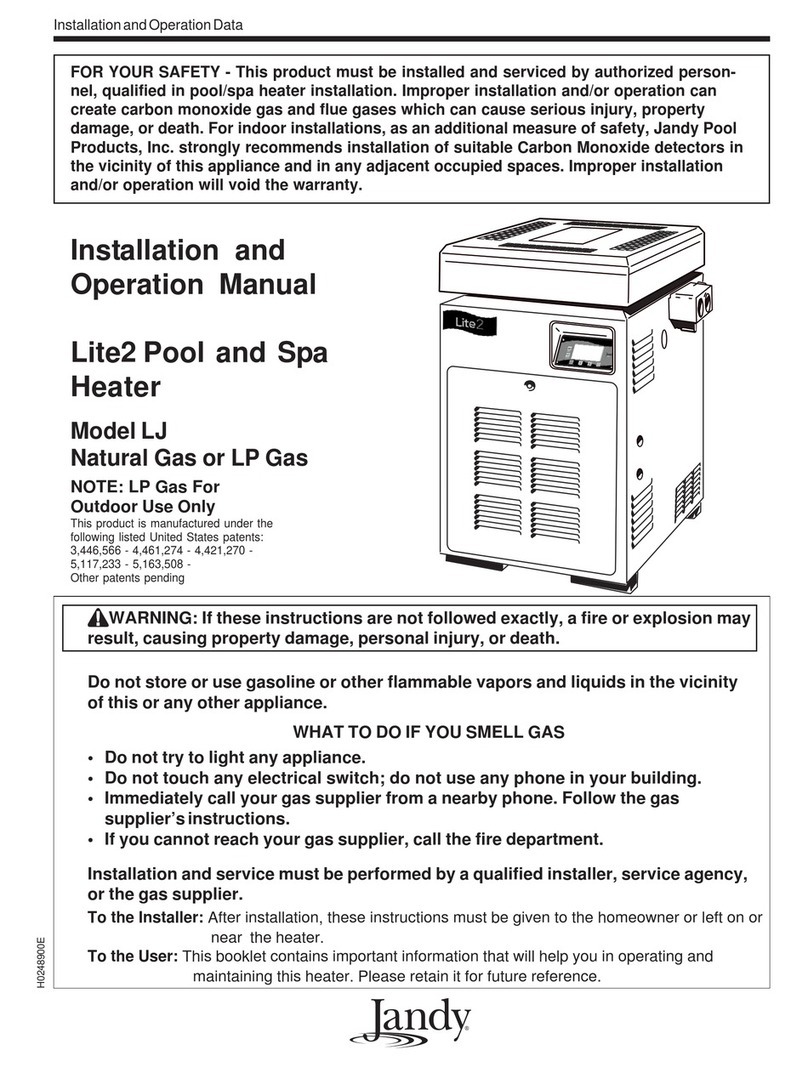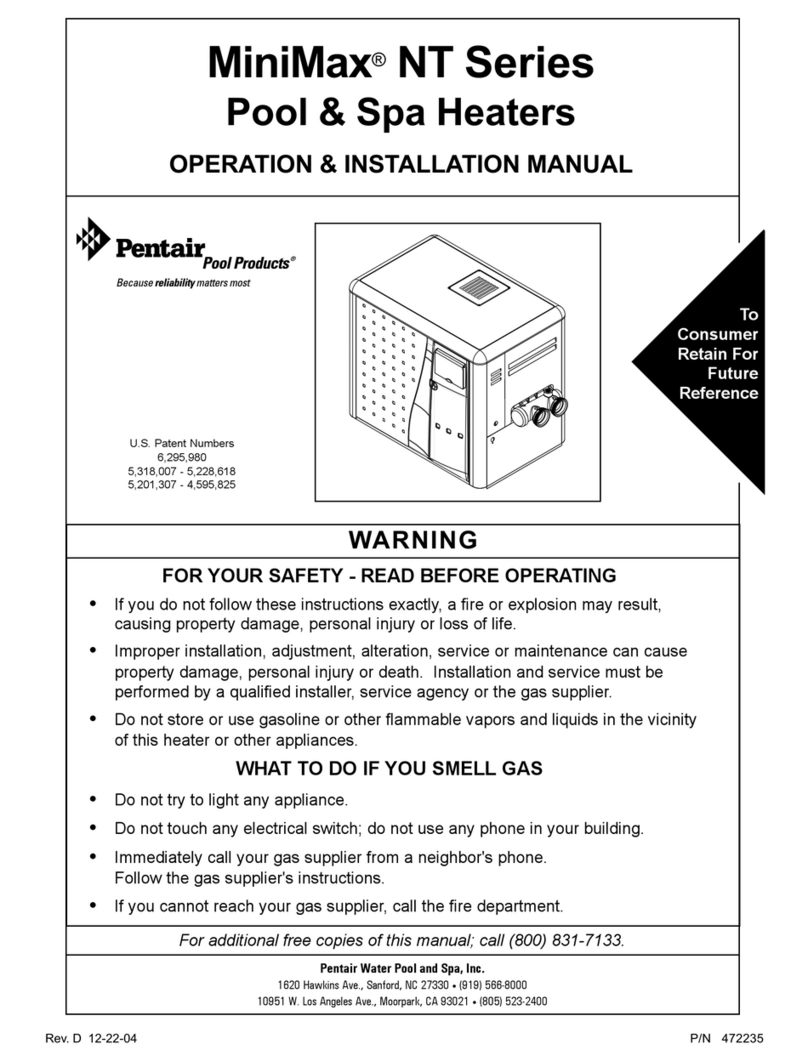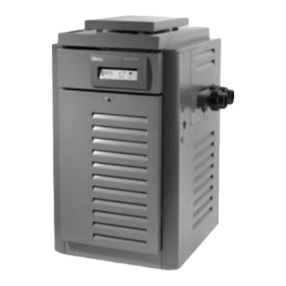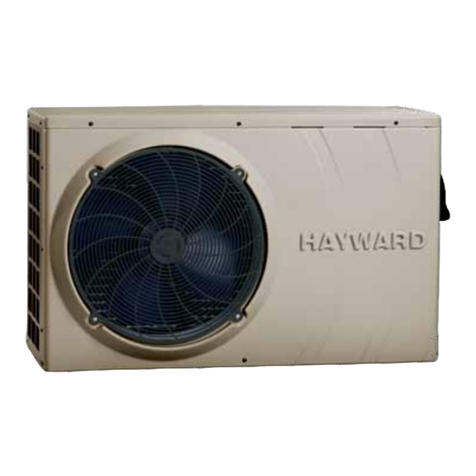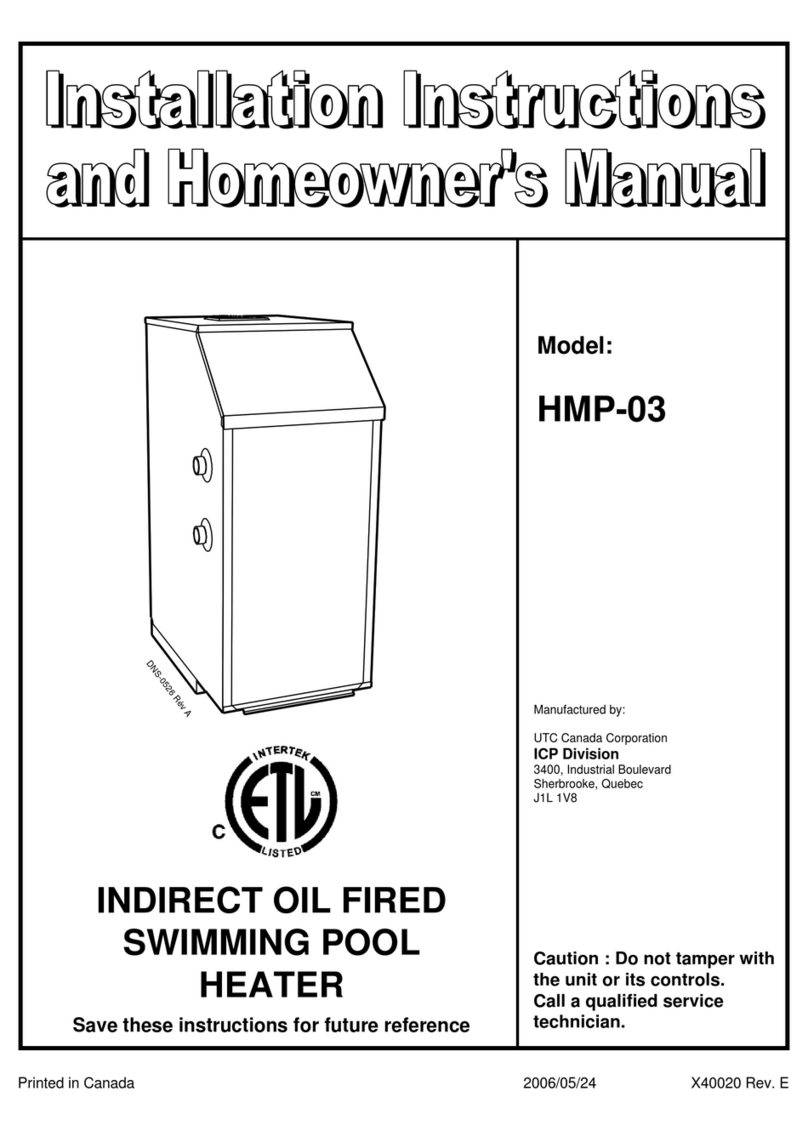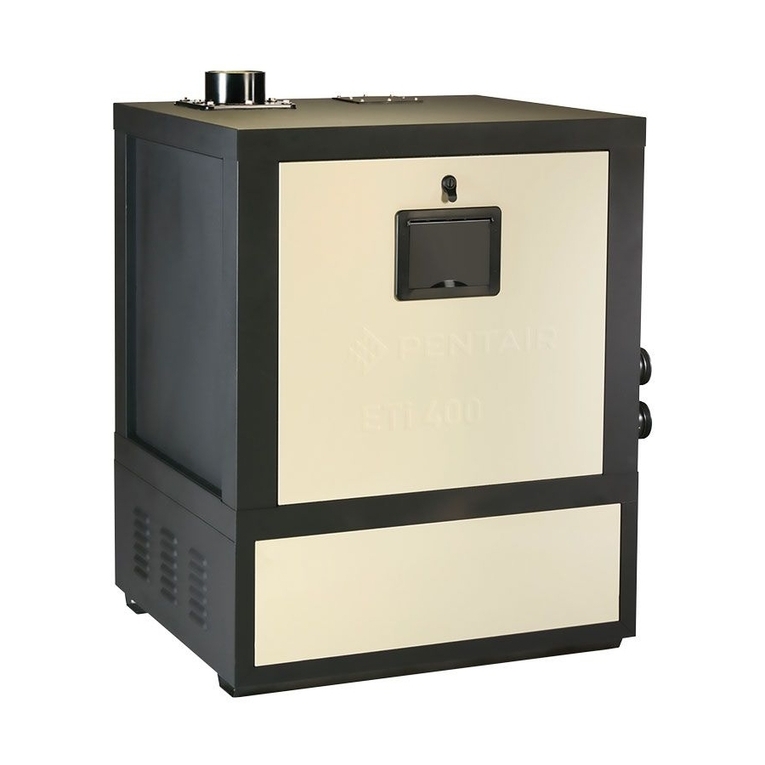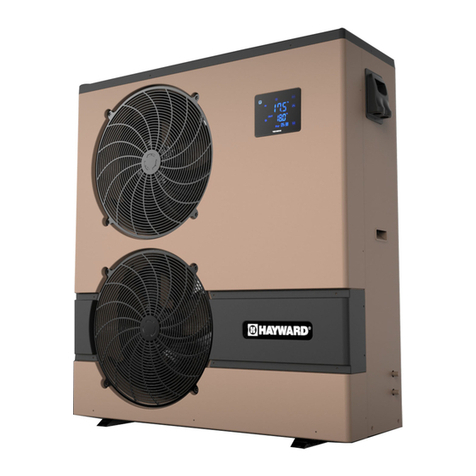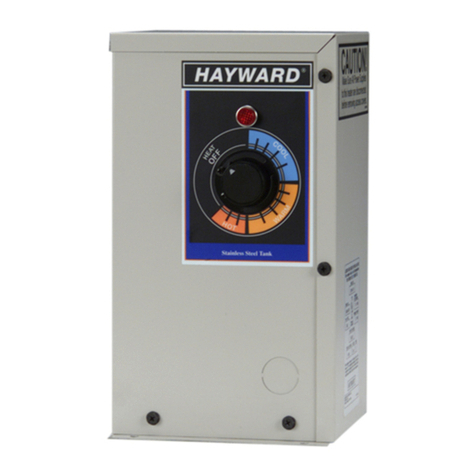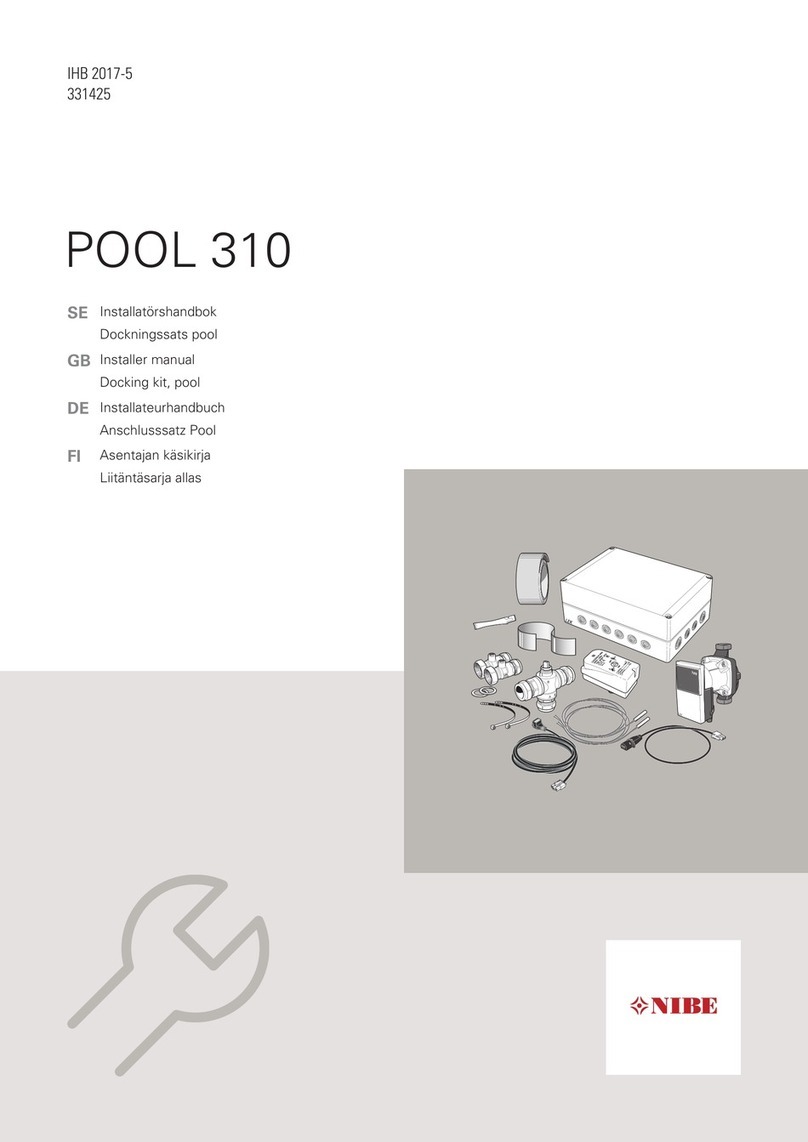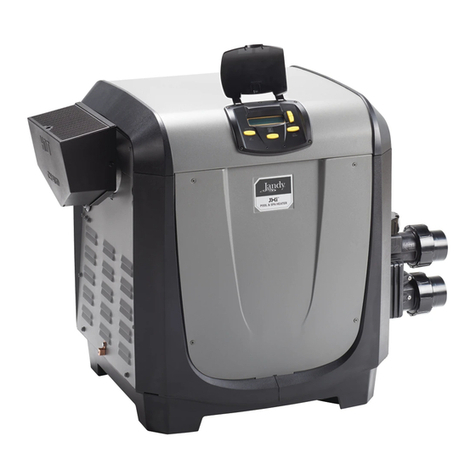
2CONTENTS
Safety Information..............................................3
Section I General information ...........................7
Introduction ....................................................7
Warranty ........................................................7
Maintaining proper water chemistry ...............7
Section II Installation .........................................9
Equipment inspection ....................................9
Important notice .............................................9
Conformance with codes ...............................9
Altitude of installation .....................................9
Uncrating the heater ....................................11
Locating the heater.......................................11
Flooring ........................................................13
Tie-Down Brackets .......................................13
Indoor Installation and Venting.....................14
Clearances ...................................................14
Air Supply.....................................................14
Vertical Venting.............................................16
Horizontal or Vertical Venting .......................17
Reversible water connections ......................19
Gas supply and piping .................................21
Water piping .................................................24
Installation above pool surface ....................26
Chlorinator/chemical feeder .........................26
Pressure relief valve ....................................27
Electrical specifications ................................27
Electrical connections ..................................28
Remote control connection ..........................29
Section III Check-out & Start-up .....................32
General ........................................................32
Gas line testing ............................................32
Gas pressure testing ...................................33
Water pressure switch .................................35
Two-speed pump .........................................35
Temperature adjustment ..............................36
Temperature lock-out ...................................37
Fahrenheit v. Celsius ...................................37
Heating mode ..............................................37
Retry (Failure of light) ..................................38
Recycle (Loss of flame) ...............................38
Keypad inputs ..............................................38
Automatic reset time ....................................39
Periodic inspection ......................................39
Winterization ................................................39
Draining the heat exchanger .......................40
Spring start-up .............................................40
Section IV Technician Service ........................41
General ........................................................41
Maintenance ................................................41
Heat exchanger inspection and cleaning .....41
Combustion chamber ..................................42
Burner inspection and cleaning ...................42
Burner removal and replacement ................42
Gas valve replacement ................................43
Igniter ...........................................................43
Flame sensor ...............................................44
Burner orifices .............................................44
Gas conversion ............................................44
Electrical wiring ............................................44
Ignition control system .................................44
Blower vacuum switch..................................45
High limit switch ...........................................45
Exhuast Gas Temperature Limit...................46
Thermistor ....................................................46
Water pressure switch .................................46
Transformer .................................................47
Blower ..........................................................47
By-pass service cartridge ............................48
Section V Troubleshooting .............................49
General ........................................................49
Automatic reset time ....................................49
Supply wiring ...............................................49
Internal wiring ..............................................49
Fuse specifications ......................................50
Error codes...................................................51
Troubleshooting ...........................................53
Warranty.......................................................59
Service Parts................................................61
Specifications ...............................................65

